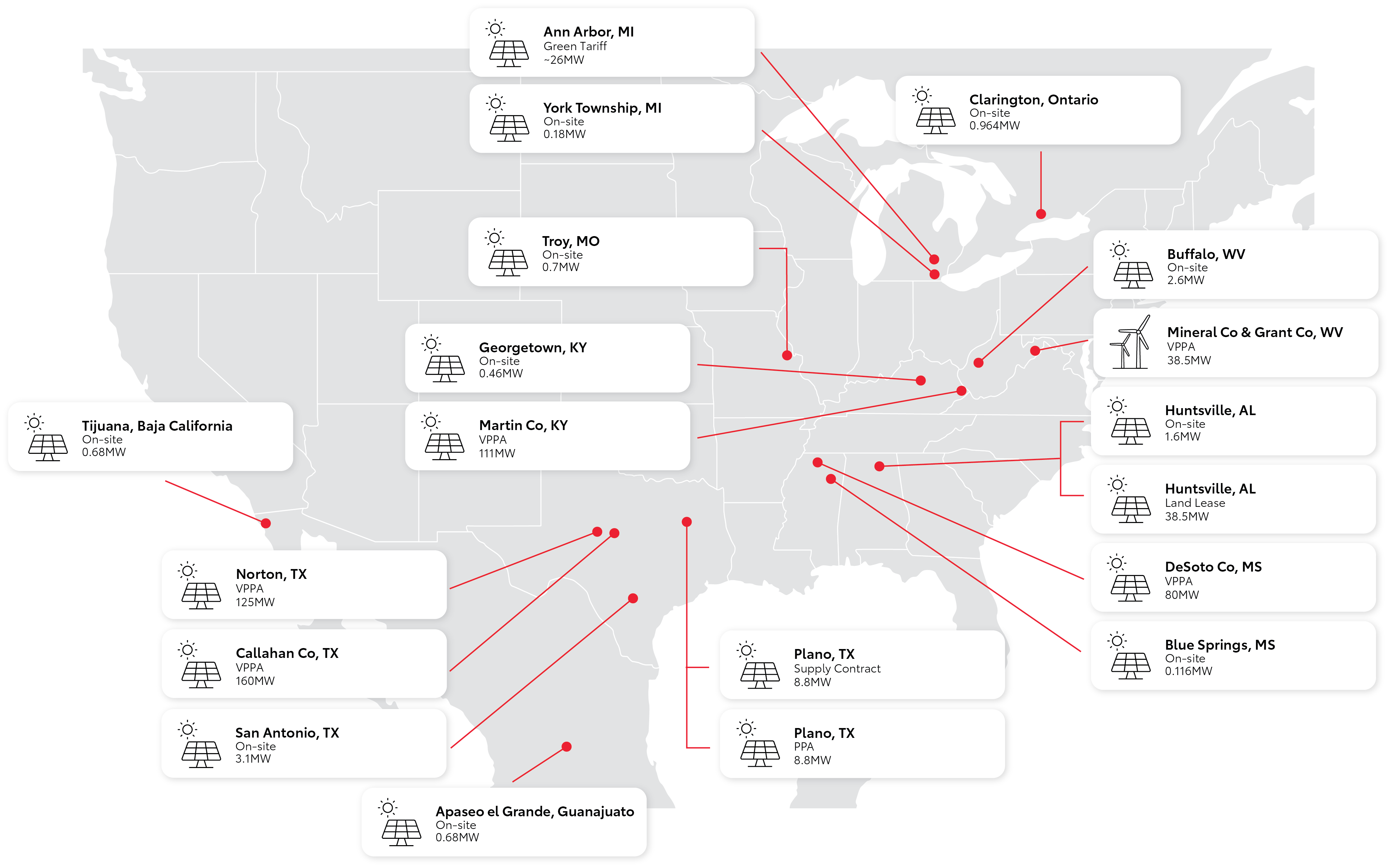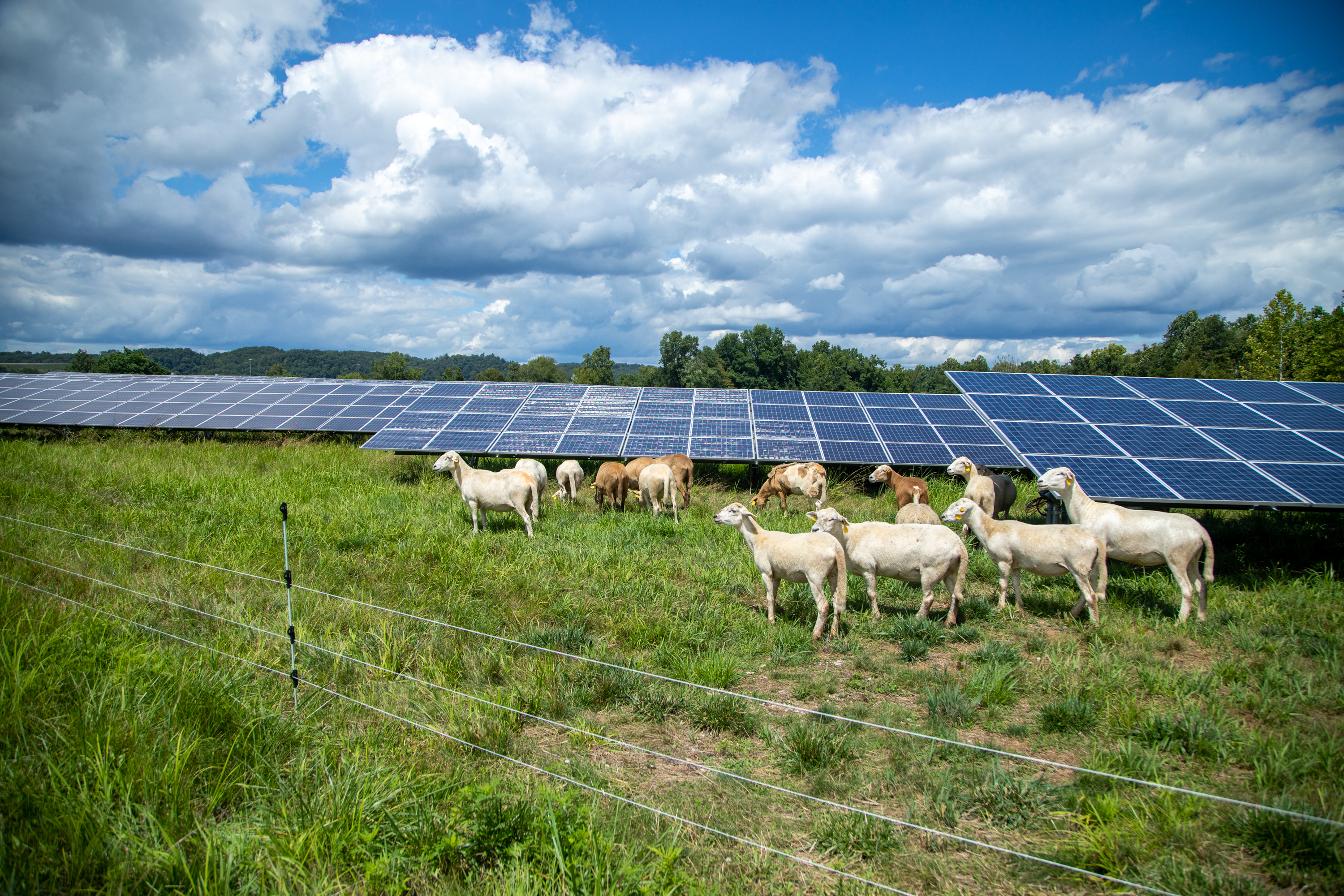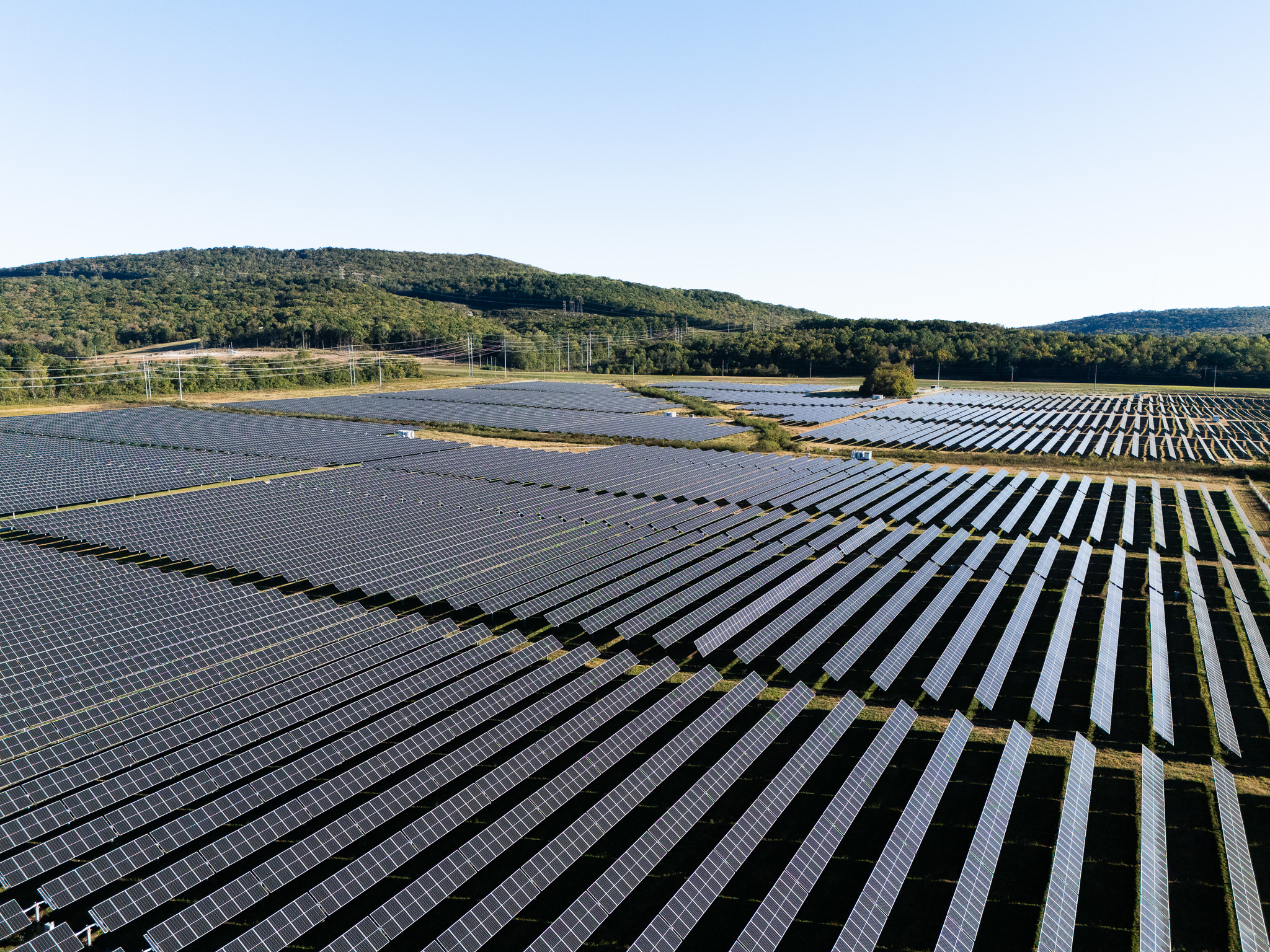On Our Way to 100% Renewable Electricity
TMNA aims to use 100% renewable electricity at our North American plants, offices, and other facilities by 2035. This is part of our larger commitment to make all facilities carbon neutral by 2035. 1, 2
To help achieve our aim and address climate change, we invest in a combination of on- and off-site renewable energy (RE) projects. The map below shows the five types of RE projects that we have invested in as of December 2024.
1 Carbon neutral at our facilities means we aim to reduce our Scope 1 and 2 greenhouse gas (GHG) emissions to the greatest extent possible, then rely on offsets, if necessary, to get us to zero GHG emissions.
2 Toyota’s carbon milestones and statements set forth in this feature are forward-looking and relate to the manner in which Toyota intends to conduct certain of its activities based on management’s current plans and expectations. They are not promises or guarantees of future conduct or policy, and are subject to a variety of uncertainties and other factors which may make them unattainable, many of which are beyond our control, including government regulation, supplier and third-party actions, and market forces.


Installation of On-site Solar: TMNA has installed solar panels at several North American manufacturing plants, including those in Alabama, Missouri, West Virginia, and Tijuana, Mexico, as well as at non-manufacturing facilities, such as the Eastern Canada Parts Distribution Center in Clarington, Ontario. In Alabama, the Huntsville powertrain plant has a 3.3-acre solar array that, at the time of construction, was the largest solar array in Madison County.
Supply Contract: Thanks to a deregulated electricity market in Texas, where electricity consumers can contract directly with third-party electricity generators, TMNA has secured a contract with a Texas electricity producer that supplies 100% of our Plano headquarters campus consumption with wind power generated in Texas. The contract provides electricity and RECs (retired on Toyota’s behalf by the supplier).
Green Tariffs: Green tariffs are voluntary utility programs that allow customers to buy energy and associated RECs from a large-scale renewable energy project through an independent tariff or as a rider on a customer’s current electricity bill. For example, TMNA is purchasing 100% renewable electricity for its R&D facility in Ann Arbor, Michigan, through a green tariff program offered through DTE Energy.

Land Lease: Through a land lease, landowners receive rental payments from a solar developer based on per-acre solar use.
For example, Toyota’s engine plant in Alabama (TMMAL) is leasing property to Toyota Tsusho America, Inc. (TAI). TAI owns and operates a 168-acre, $49 million solar project that is expected to generate 62,000 MWh of clean, renewable electricity annually. The 30-megawatt system is in the North Huntsville Industrial Park near the Toyota engine plant. TAI has a power purchase agreement (PPA) with Huntsville Utilities, which means the power generated by the solar project is directly supplied to the utility’s distribution system. As part of the land lease contract, TMMAL receives 50,000 RECs from the solar project annually.
Voluntary Power Purchase Agreements (VPPAs): A VPPA is a financial contract that allows a buyer – such as TMNA – to access renewable energy without physically taking delivery of the electricity. A VPPA is also called a contract for differences. A buyer buys power from a local utility. A renewable energy system developer sells energy generated by the system into the market in the physical location of the system. The buyer pays a fixed price to the developer for all or some of the electricity from the system plus RECs. The buyer then sells electricity into the market and receives the market price. The buyer receives the RECs.

For example, TMNA has agreed to buy 100 megawatts of electricity generated as part of renewable energy company Savion’s Martin County Solar Project through a VPPA. The project is converting a brownfield site – a mountain-top coal mine that closed in the 1990’s – in Martin County, on the border of Kentucky and West Virginia, into a new solar photovoltaic energy facility. The project was constructed in 2024, and commercial operation began in 2025.



